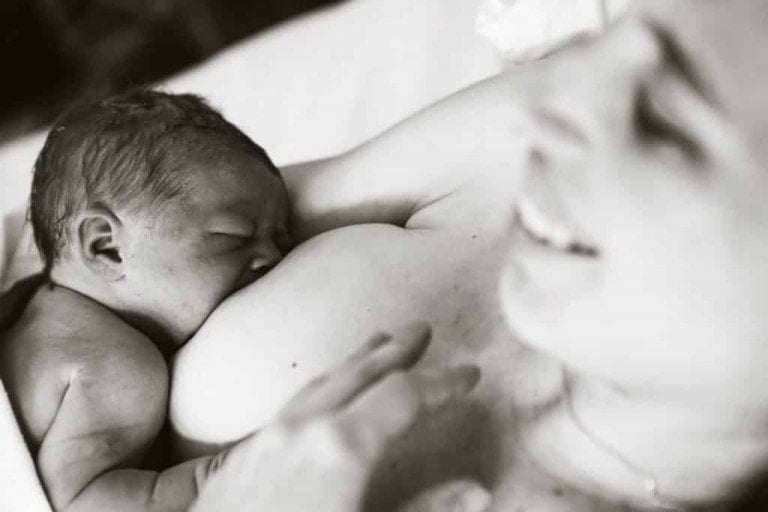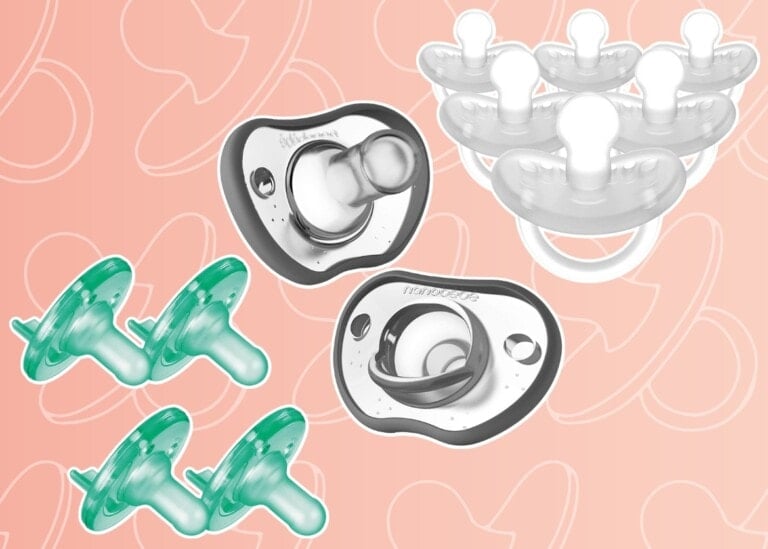Do you find your baby wakes up as soon as your head hits the pillow every night? Parenting a newborn is beautiful but exhausting. Fortunately, a practice called dream feeding might help you catch some extra ZZZs.
Most newborns eat about eight to 12 times in a 24-hour period. Some of these feedings will occur in the middle of the night, which is developmentally appropriate for the growing infant. Yes, that’s right, as much as you might not like to hear it, night wakings are normal for babies. Feeding frequency throughout the day will vary from baby to baby.1 The method your baby is feeding (breast or bottle) and the age of your little one will also impact the amount of times they eat each day.2
While infants require more frequent feedings to meet their growing needs, sleep as a parent becomes harder to come by. There is a practice some parents have found success with that allows babies to get the food they need while giving them a bit more sleep. This practice is called dream feeding. Dream feeding is a gentle technique that can help you fill your baby’s belly before you go to bed.3 It still allows your baby to receive the calories they need but may help coordinate your baby’s sleep pattern and allow you to have a longer stretch of sleep at the beginning of the night.10
What Is a Dream Feed?
Dream feeding is a parent-initiated feed where you feed your baby without fully waking them before you go to sleep. The baby is usually half-asleep in a dreamy state while at the breast or bottle. Sneaking in that extra feed and filling your baby’s belly can help sync your baby’s longest stretch of night sleep with yours. Your baby is less likely to wake from hunger right after you fall asleep, giving you some much-needed rest.4
Why You Should Try To Dream Feed Your Baby
After many sleepless nights, most parents are looking for a solution to try to get their baby to sleep longer stretches. Dream feeding isn’t guaranteed to work for every family, but it could benefit you and your little one.
It’s best to try dream-feeding your baby when they can sleep for three- or four-hour stretches between nighttime feeds. This varies depending on the infant but usually lasts six weeks to four months. Fortunately, sleep feeding doesn’t interfere with your baby’s need to feed at night. It helps you shift your baby’s feeding schedule so that it is more conducive to your sleep.4,5
How To Dream Feed
The timing of the dream feed will vary depending on when your baby goes to sleep for the night and when you go to bed. You will want to take your baby out of their bed about three to four hours after their bedtime feeding and try to offer a full feeding while they are still asleep. For instance, if your little one goes to bed around 6-7 p.m., you will feed them around 10 p.m. before you settle in for the night, hopefully giving you a few hours of uninterrupted sleep.4
A sample schedule would go something like this:
- 6 p.m. — Feed the baby
- 6:30 p.m. — Bedtime routine
- 7 p.m. — Baby goes to sleep
- 10 p.m. — Dream feed
- 10:30 p.m. — You go to sleep
- 2-4 a.m. — Baby wakes to feed
- 6-8 a.m. — Morning feed
The above sample schedule is just that — a sample. Everyone’s feeding “schedule” will be different. Make sure to follow your infant’s cues and feed them when it’s best for them.
Dream Feed Tips
Here are our top tips for successful dream feeding.
Find the Right Time
Choose a time at least 30 minutes before you typically go to sleep, allowing time for the feeding and for the baby to be held upright before being put back down to sleep.
Keep It Calm and Quiet
The main goal of a dream feed is for the baby to stay asleep. Dim the lights and keep the environment quiet, peaceful, and relaxed to avoid fully waking up your baby.
Use Proper Feeding Techniques
Breastfeeding may require gentle assistance to ensure your baby is latched correctly, especially if they are extra sleepy. If bottle feeding, consider using a slow-flow nipple and paced feeding to prevent overfeeding or choking.7
Safety First
Don’t force a breast or bottle in your baby’s mouth if they won’t latch. You can try to rouse your baby gently, but if they aren’t interested in eating, it’s best to let them sleep until they are ready to feed again.8 You also want to pick up your baby. Never feed your baby while they are lying in their crib or prop a bottle up.9
Burping Depends on Your Baby
The need to burp after the feeding depends on the baby. Burping may wake the baby, but if your baby is prone to gas or spitting up, you may want to gently burp them before laying them down.
Consult a Professional
Talk to your pediatrician or lactation consultant to ensure that dream feeding is the right choice for you and your baby.
Benefits of Dream Feeding
Here are some of the benefits of a dream feed.4,11
- Rested parents: Offering a feed before you go to bed will help you get a longer stretch of much-needed sleep.
- Extended sleep: Dream feeding may help babies sleep for longer stretches. Offering a feeding while the infant is asleep may prevent them from waking up due to hunger during the night.
- Predictable nighttime routine: Babies thrive on routine, so dream feeding can help establish a predictable nighttime routine.
When To Stop Dream Feeding
You may want to stop dream feeding if you or your baby aren’t benefiting from it. For example, if your baby wakes up during the feeding and doesn’t easily fall back asleep or continues to wake up frequently throughout the night.4
If it’s working, there’s no need to rush to drop it. As babies start growing and sleeping longer stretches, the need for sleep feeds will naturally decrease. Some babies will continue until 6-9 months of age, while others may drop it sooner.4,6
Dream feeding can be a valuable tool for parents seeking to catch extra ZZZs. By choosing an appropriate time, creating a calm environment, and maintaining safety considerations, dream feeding can be a positive addition to your baby’s sleep routine.
































